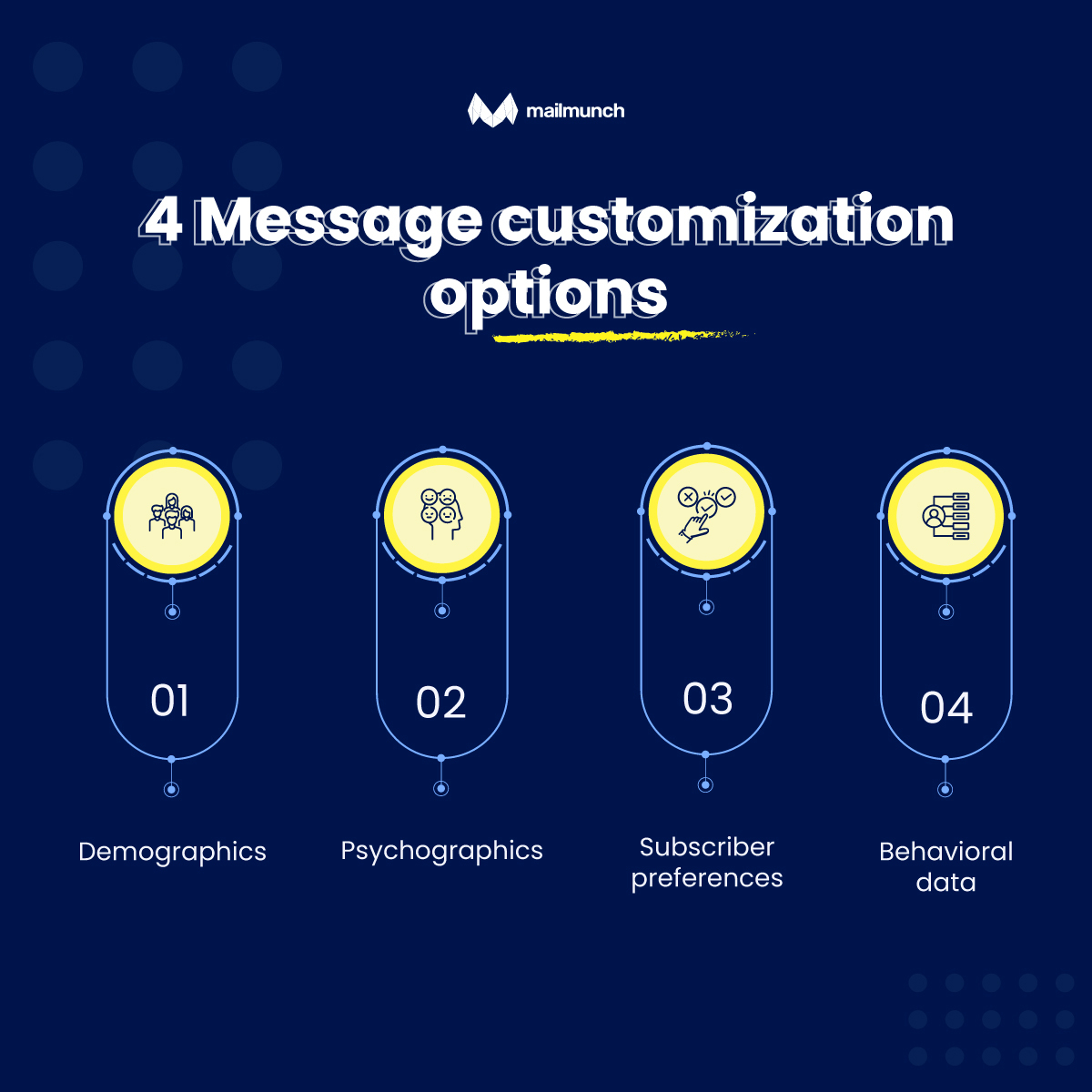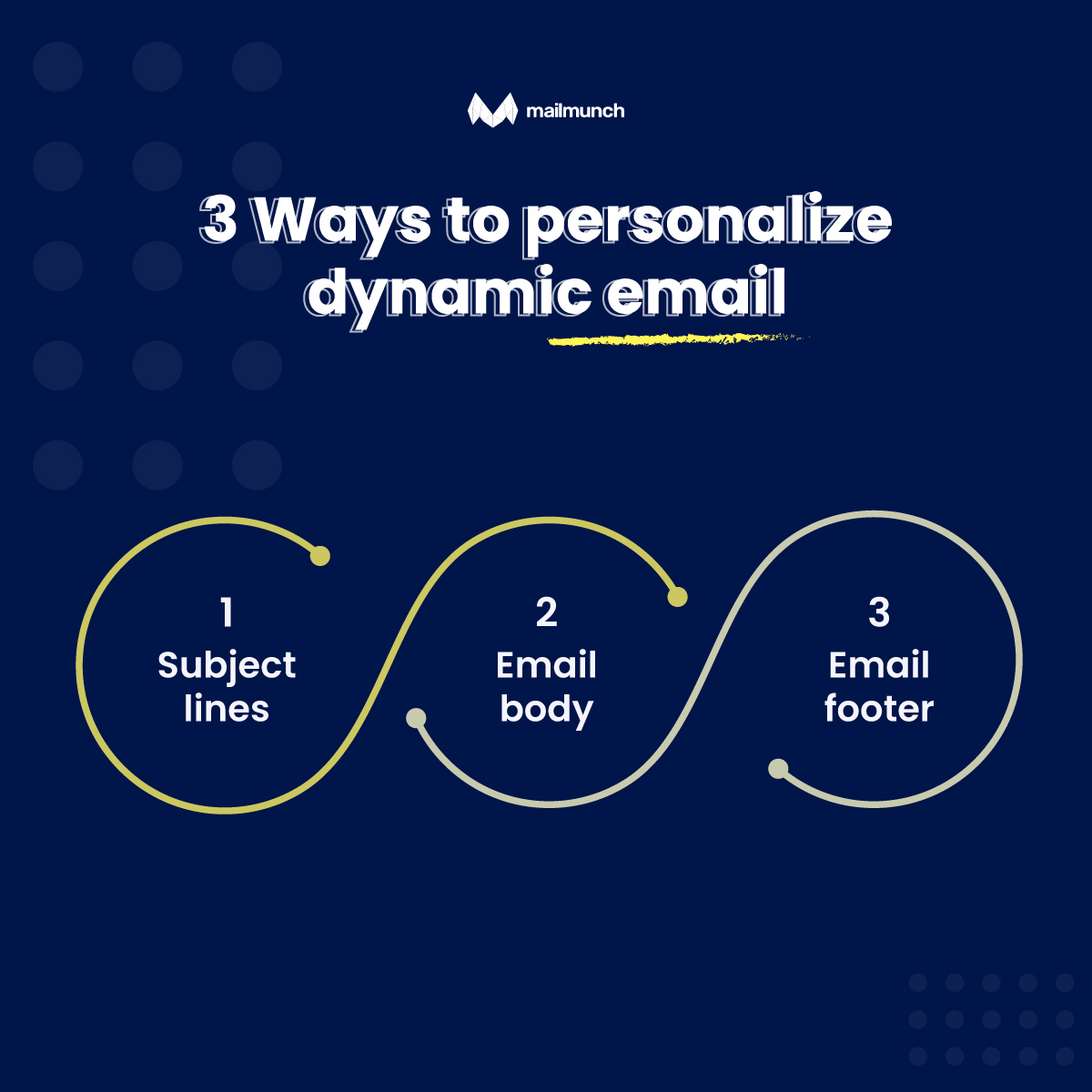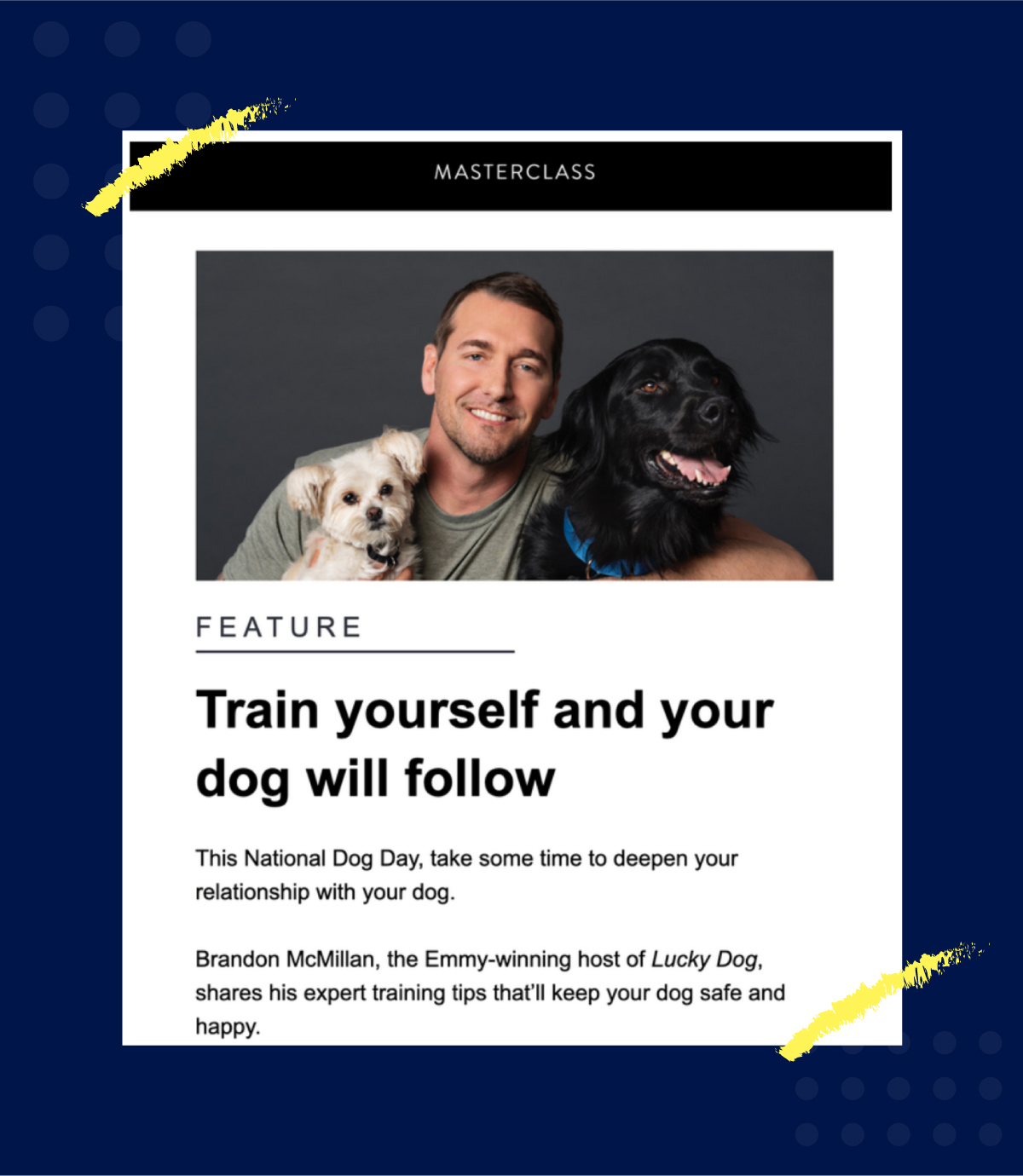
.png)

Last updated on
July 12, 2023
Marketers are always searching for better ways to catch the attention of their customers. One channel they haven’t gotten tired of is email marketing. Studies show that 9 out of every 10 marketers distribute content via emails.
They, however, face a major issue. Consumers receive emails from their favorite brands every day. Like internet users have developed banner blindness, recipients have become immune to messages flooding their inboxes.
Can you do something to prevent recipients from ignoring your emails? Personalization is the answer. According to research, marketers experience a 20% increase in sales when creating personalized email campaigns.
If you want to generate similar results, you should try using dynamic email content. It helps you develop personalized customer experiences.
What is dynamic email? This article will give you the answer you need!
A dynamic email enables marketers to display personalized parts of an email to different audience groups. These parts change based on data brands have about their customers. For example, they can segment consumers based on age, location, and gender.
With dynamic email content, you can personalize sections such as:
It is called dynamic because of one reason. Only a selected audience sees the personalized email content. All other recipients see the same content and visuals, but they do not get that “personalized message.”
For instance, your marketing team sends a newsletter to all subscribers, but they also want to mention a special event in London. As people living in other countries can’t attend the event, you can personalize the CTA, text or give a link that appears in email for the Londoners (target audience).
Do you need to create a new group for Londoners for that specific message? You can do that, but you will waste time. Instead, add dynamic content to the general newsletter. Londoners will be the only recipients to read about the event.
Dynamic email content helps businesses improve their marketing efforts. It enables them to present user-specific recommendations to their audience. For example, you can send a coupon code to your loyal customers while giving product recommendations to new leads all in one email.
This is possible because dynamic content allows you to change specific sections of a message. Let’s see what you can change.

Dynamic content makes sending personalized emails easier, just like an email signature generator helps marketers create signatures in no time. You can start with adjusting the text to target specific subscribers. Here are the parts you can tailor:
The following example shows a personalized message which includes the subscriber’s name:
Rather than send a generic message, you will get better results with emails tailored to each customer. Research shows that 72% of consumers only respond to messages.
Visuals improve your email campaigns. It’s the small details that matter the most. Your newsletters should have images, videos, or even GIFs that reflect your subscriber’s interests. Together with the text, visuals can help you achieve your marketing goal.
Dynamic email content can help you include visuals relevant to specific customer groups. You want to add a meme to your email, but you realize that millennials will only understand the reference. You should make sure this demographic group only sees the meme.
Calls to action are an effective way to encourage website visitors or email recipients to take action. According to research, emails with a single call to action increased clicks by 371%. This proves that your newsletters cannot go without CTAs.
When you use dynamic content, you can improve your CTAs even more. Dynamic email content enables you to customize your CTA to increase your click-through rate.
Let’s look at a message that a customer received on their birthday. Aside from the personalized copy, the business also customized the CTA so that the consumer gets flights and hotel deals relevant to her:
Dynamic email messages bring multiple benefits to the table. Dynamic content is a powerful marketing tool for creating a personalized customer experience to boost conversion rates. Let’s take a look at five reasons you should start using it.

According to Forbes, 74% of customers are at least somewhat influenced to purchase a product or service based on experiences alone. Positive interaction with your business can move your customers down the sales funnel.
Bear in mind, however, that the experience you offer must also be unique. Consumers interact with dozens of brands every day. They are used to getting similar-looking messages, so they might ignore most of them in the inbox.
You can send dynamic emails to create a personalized customer experience. Change the text or images to reflect the customers’ interests.
Dynamic email content can save businesses a lot of time they would spend on setting up campaigns manually.
In the past, whenever marketers wanted to send emails to contacts that included different sections, they would need to spend hours creating numerous static messages. Each message would have unique content to deliver the best customer experience to its users.
The feature is helpful because brands save time by selecting which email parts should display personalized content. The end-users get tailored messages while companies reap the benefits.
Nowadays, consumers want to see that a business cares about them. They don’t want to be treated just like names in your database. According to Salesforce, more than 80% of customers will favor brands that treat them like a person, not a number.
Sending emails tailored to their preferences and interests proves customers are not a number to you. Use dynamic email content to achieve this. As a result, your campaign’s engagement rate will go up.
After all, people are more likely to interact and respond to your messages if they are relevant to them.
The end-users always want to see relevant content in their inboxes. If they take time to read your message, you should make it count.
Dynamic content enables you to deliver tailored, relevant emails to the end-users. Instead of informing subscribers about news or offers that don’t interest them, you can send content they want to see.
Companies across different industries should use the dynamic email feature. An eCommerce website can benefit the most from them. It allows them to show personalized recommendations, offers, and events.
When customers receive mail, they should see discounts that help them purchase their favorite products at lower prices. Sending an offer they can’t use as they wish will not produce great results. Relevance is important here.
Dynamic emails increase conversion rates by making the customer experience more intuitive and relevant. The recipient doesn’t want to see unnecessary and redundant information. It won’t move them down the sales funnel.
What will encourage them to purchase is a message - that offers a solution to their problem. They are more likely to convert when they are sure your brand can help.
With dynamic email content, you can mention the pain points of specific customer groups. Each group will see the issue relevant to them and how your brand can help them.
Customers crave a highly personalized shopping experience. It’s time you up your game and create dynamic email messages. However, you need to know how dynamic emails work to do this.

Marketing relies heavily on data. All customers would look the same without it. Data enables brands to get to know their consumers and cater to their needs.
If you want to send dynamic email messages, you must collect data first. You can do that in three ways:
According to Helga Zabalkanska, CEO of Mysignature.io "The goal is to have people come back to your website, even if you're temporarily out of stock. The best strategy is to engage them in the meantime so they don't miss out on the offers"
Dividing subscribers with similar interests and characteristics into groups helps you increase engagement. Dynamic email messages need segmentation to be effective.
Leverage customer data you have to determine the right group for your recipients. This ensures all emails are relevant to them.
Once you create segments, you must customize the email. Here are four customization options:

Most marketers rely on demographics to customize their messages. They are some examples of demographic information they zero in on:
Knowing the basic information about your customers isn’t enough. You must dive into their emotions and values as well. Psychographics comes into play here.
Psychographics in marketing studies consumers based on their values, beliefs, goals, interests, and desires. You can find out this information through surveys. Customers should tell you what they believe in or what interests them.
Use this data to customize a dynamic email reflecting their views or choices.
How can you ensure that recipients will open your email? By asking them what kind of content they want to see. For instance, some would like updates, while others prefer promotions.
Behavioral data tells you how a customer interacts with your company. It describes what they do on your website and across other channels. Use this data to create a relevant email based on their purchasing history, website activity, etc.
You must take steps to personalize dynamic email content depend on your chosen email marketing service. However, most of them ask you to add variables or merge tags to insert dynamic content.

64% of customers decide whether or not to open emails based on the subject line. Dynamic content helps you create a subject line that catches consumers’ attention. When they see it's relevant for them, they will surely read the message.
You can draw their attention by including the name variable or merge tags (depending on your email service). They will stop dead in their tracks when they see their name because they will feel like you are talking directly to them.
We suggest that you create a single template that includes dynamic data. Choose where to display dynamic images, text, or CTAs in that template. You can then make changes to the template based on your needs.
Adding dynamic data to each new email is more demanding and time-consuming. Instead, use an existing template and just copy the new sentences there.
Depending on your email marketing service provider, you can add a built-in content block or your custom HTML template. You can customize the email footer in both cases.
You can add merge tags or variables to customize any piece of information you want to display in the footer.
Before creating dynamic email messages, you should be aware of five steps.

Customer personas are profiles that show the common characteristics of specific audience groups. When you know your customers’ pain points and goals, they can better experience your brand.
This is why you must create customer personas. Make sure you gather all information you need to develop accurate representations. Your audience won’t receive relevant dynamic email content if you don't.
At times, you won’t be able to create customer personas for certain consumers. The reason is that you don’t have sufficient data about them. For instance, you won’t be able to use the name variable if the customer has only left their email address.
If this happens, you can ask the customers to update their profiles.
The next step is to plan which sections of your content will be dynamic. This depends on the customer persona you want to target.
We suggest you add content blocks first and then determine which sections will be dynamic. For example, you might decide that you will only personalize the CTA.
Don’t forget to track the performance of your campaigns. This will tell you how your subscribers respond to your emails. You will also know whether you should make any changes.
What should you focus on? You can start with click rates for each dynamic block you added to your email. If they are low, you might need to make a few adjustments.
The last step is often overlooked. Marketers rush to write content without thinking about its length. As a result, the content may not fit the block size well. It ruins the whole email, no matter how hard you worked on it.
Add your content to the block size. Check to see if it fits. In case it doesn’t, you should edit whatever you wrote.
As we said, dynamic email messages improve customer experience and boost engagement, among other things. Take a look at five examples of companies using it to improve their marketing efforts.
Netflix has proven over the years that it is the king of personalization. The company collects data on each user to provide the best possible experience. It examines customers’ behavior to recommend relevant movies or shows to them.
Take a look at this email:

Netflix leverages dynamic blocks to deliver an email that addresses the customer by their first name. The consumer gets the feeling that Netflix knows them.
Another use of the dynamic email feature comes from Airbnb. In this example, the company personalized the subject line.

Aside from adding the customer’s name, Airbnb included where they live. The email itself suggested to the recipient where they could go for the weekend. It contained tailored information, making the lead more likely to convert.
Masterclass shows that you shouldn’t only settle for customizing your recipient’s name and location. You can take things further and send a message based on their interests.
In this example, Masterclass addresses the people who love dogs. Those who aren't fans of dogs don’t see this section.

For dynamic content to be effective, you must collect as much data on your consumers as possible. It’s not enough to know which pages they visited on your website. You should dig more as Michaels did.
The company sent an email about a special offer. It also included a part about discounted supplies aimed at parents because school was starting soon.

Huckberry uses the dynamic feature to target customers who abandon their cart. Let’s look at one example from this company.

The customer left the boots in their cart for over 24 hours. After this period, the email was triggered and sent. The content is the same for all emails of this type, but the dynamic section changes based on what the customer left in their cart.
Marketers will continue to rely on dynamic email content to create a unique customer experience. When your audience feels like you know them, they are more likely to engage with your brand. Use this feature to draw your customers in!
With dynamic email, you can complete multiple tasks without the need to create any new email. Some of the things you can do without closing an email includes; responding to comments, filling out questionnaires, RSVP to events, and so on.
Dynamic email content refers to any part of an email that changes based on customer data you collect about your subscribers.
If you want to send dynamic emails, use an email marketing service to add variables or merge tags.
A bookworm and a pet nerd at heart, Summra works as Content Writer at Mailmunch. She loves to play with keywords, titles, and multiple niches for B2B and B2C markets. With her 3 years of experience in creative writing and content strategy, she fancies creating compelling stories that your customers will love, igniting results for your business.
Tags:

M. Usama
April 18, 2024
.png)
M. Usama
March 21, 2024

M. Usama
March 18, 2024